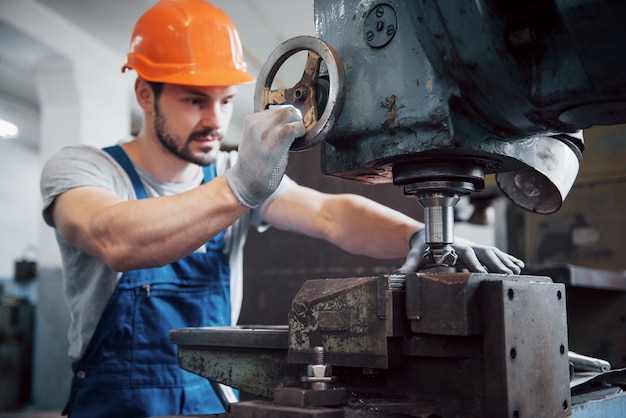Optimizing Efficiency: Advanced Approaches to Industrial Machinery Repair
In the realm of industrial operations, machinery serves as the backbone of productivity and output. The seamless functioning of these machines is crucial for ensuring operational efficiency. However, breakdowns and malfunctions are inevitable, posing significant challenges to production timelines and overall efficiency. To address these issues, advanced approaches to industrial machinery repair have emerged, focusing not only on fixing problems but also on optimizing efficiency throughout the repair process.
The heart of industrial prowess lies in the seamless functioning of machinery. However, the reality of wear, tear, and occasional breakdowns poses constant challenges to operational continuity. In response, the landscape of industrial machinery repair has undergone a transformative shift. Beyond mere fixes, a new era has emerged—one focused on not only rectifying issues but also on revolutionizing efficiency throughout the repair process.
Importance of Efficient Machinery Repair
Efficiency in machinery repair isn't solely about fixing what's broken; it extends to minimizing downtime, reducing costs, and ensuring the longevity of equipment. Timely and effective repairs are pivotal to maintaining a smooth workflow within industrial settings, preventing disruptions that can hinder productivity and impact bottom-line results.
Diagnostic Technologies Revolutionizing Repair Processes
Predictive Maintenance
One of the revolutionary advancements in machinery repair is predictive maintenance, leveraging sensors, data analytics, and machine learning algorithms. By continuously monitoring equipment performance, predictive maintenance anticipates potential issues before they occur. This proactive approach minimizes unexpected breakdowns, allowing for timely interventions and reducing downtime.
Condition Monitoring Systems
Condition monitoring systems offer real-time insights into machinery health by tracking parameters such as temperature, vibration, and lubrication levels. These systems enable early detection of anomalies, empowering maintenance teams to take preventive actions, thereby extending the lifespan of machinery and averting catastrophic failures.

Implementation of Robotics and Automation
Robotic-Assisted Repairs
Integrating robotics into repair processes streamlines intricate tasks. Robots equipped with precision tools can perform repairs with unparalleled accuracy, especially in hard-to-reach or hazardous areas. Their ability to replicate exact movements ensures consistent and high-quality repairs while reducing human error.
Automated Maintenance Procedures
Automation plays a pivotal role in optimizing efficiency during repairs. Automated systems can execute routine maintenance tasks, such as part replacements or lubrication, with precision and consistency. This not only saves time but also reduces the likelihood of human errors associated with manual interventions.
Data-Driven Decision-Making in Repairs
Utilizing Big Data Analytics
The utilization of big data analytics in machinery repair allows for comprehensive analysis of historical maintenance records, performance trends, and failure patterns. This analysis facilitates informed decision-making, enabling maintenance teams to strategize repairs, allocate resources efficiently, and optimize maintenance schedules.
Implementing Predictive Analytics
By harnessing predictive analytics, maintenance teams can forecast potential failures based on historical data patterns. This foresight enables proactive measures, such as scheduling preemptive maintenance during planned downtime, thereby avoiding unplanned disruptions to production schedules.
Advanced Repair Technologies
- Enables on-demand production of specialized or obsolete parts.
- Reduces lead times for replacements, minimizing equipment downtime.
- Uses high-frequency sound waves to detect internal defects in materials.
- Allows for non-destructive testing, ensuring equipment integrity.
Diagnostic Technologies Revolutionizing Repair Processes
Predictive Maintenance
One of the groundbreaking advancements in machinery repair is predictive maintenance. By harnessing the capabilities of sensors, data analytics, and machine learning algorithms, predictive maintenance enables a proactive approach to upkeep. Continuously monitoring equipment performance allows for the anticipation of potential issues before they manifest, minimizing unexpected breakdowns and enabling timely interventions to prevent downtime.

Condition Monitoring Systems
The advent of condition monitoring systems has brought real-time insights into machinery health. These systems track vital parameters such as temperature, vibration, and lubrication levels. By detecting anomalies early on, maintenance teams can take proactive measures, extending machinery lifespan and averting catastrophic failures. The ability to preempt issues before they escalate enhances operational efficiency by ensuring uninterrupted production cycles.
Collaborative Partnerships and Outsourcing
- Collaborates with suppliers for timely access to specialized parts.
- Ensures a streamlined supply chain for efficient repairs.
- Engages external experts for niche repairs or advanced diagnostics.
- Expedites complex repairs while leveraging specialized skills.
Implementation of Robotics and Automation
Robotic-Assisted Repairs
The integration of robotics into repair processes has revolutionized intricate tasks. Equipped with precision tools, robots excel in executing repairs with unparalleled accuracy, especially in challenging or hazardous areas. Their ability to replicate exact movements ensures consistent and high-quality repairs while significantly reducing the margin for human error.
Automated Maintenance Procedures
Automation plays a pivotal role in streamlining repair efficiency. Automated systems execute routine maintenance tasks, such as part replacements or lubrication, with precision and consistency. This not only saves time but also reduces the likelihood of errors associated with manual interventions, optimizing the overall repair process.
Embracing Agile Repair Strategies
Modular Repair Approaches
The adoption of modular repair approaches involves breaking down complex systems into manageable modules. This strategy facilitates quicker diagnosis and targeted repairs, reducing overall repair times and enabling easier maintenance and upgrades in the future.
Just-in-Time Maintenance
Just-in-time maintenance emphasizes conducting maintenance precisely when needed, optimizing resource utilization and minimizing unnecessary interventions. This approach avoids over-maintenance while ensuring that repairs are performed at the most opportune moments, enhancing overall efficiency.
In an era marked by technological innovation and data-driven insights, these advanced approaches redefine the landscape of industrial machinery repair. Their integration not only enhances machinery reliability and longevity but also maximizes operational efficiency, serving as a catalyst for sustained success in industrial settings. As industries evolve, embracing these advanced repair methodologies becomes imperative for staying competitive and thriving in a dynamic and demanding market.
20 Fowler Rd, Dandenong South VIC 3175, Australia
Phone: 613-9794-6675

